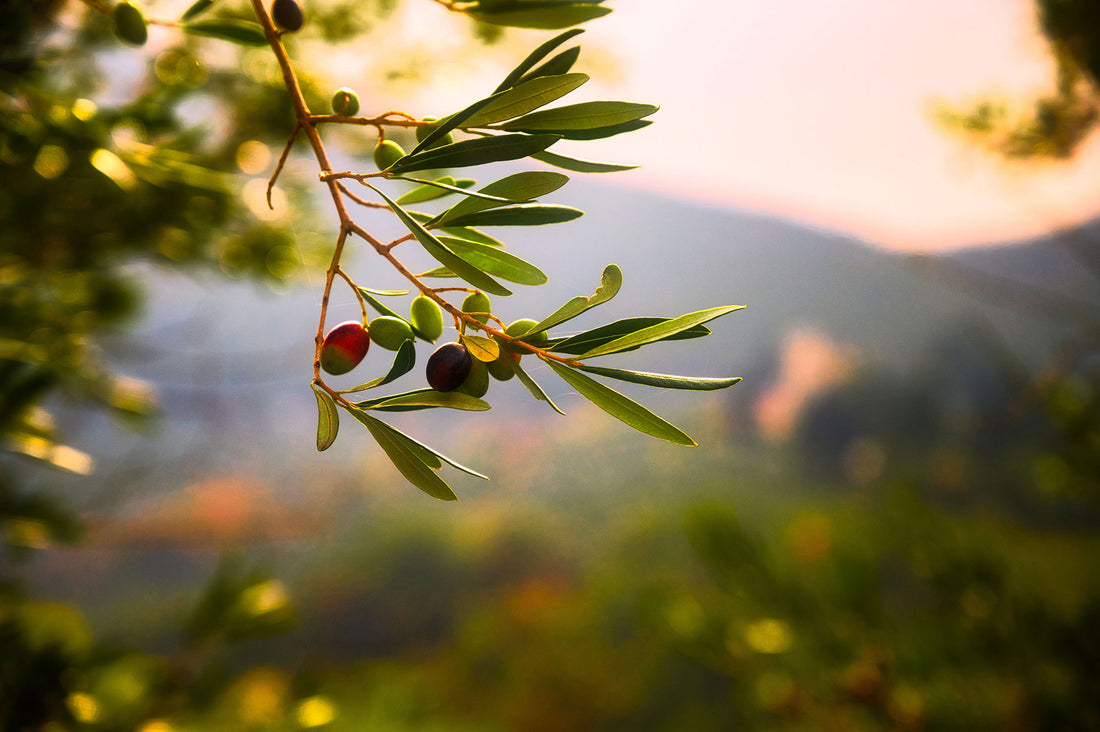The current olive oil market is extremely fraudulent, with over 70% of the olive oil found on supermarket shelves blended with cheap, inferior-quality vegetable oils such as soybean, canola, sunflower, safflower, grapeseed, and palm oil. Soy and corn are two of the crops in the US that are most heavily sprayed with toxic pesticides, so when your EVOO is blended with these oils, you will not receive the nutritious benefits of pure olive oil.
In fact, in 2015, 7,000 tons of olive oil sold in the US was falsely marketed as being 100% pure Italian olive oil, when it was actually mixed with a blend of oils from Syria, Morocco, and Tunisia. Later, in 2017, 7 people were arrested in Greece for selling 17 tons of sunflower oil that was dyed green and marketed as EVOO. With a few drops of chlorophyll and beta-carotene, sunflower oil can easily be transformed to look and smell like traditional olive oil. This lack of transparency and false marketing is unacceptable and has severed our connection with our food systems.
The fact that the global olive oil market is projected to increase from $13.03 billion in 2019 to $16.64 billion by 2027 proves that large olive oil corporations are consumed with profits over quality.
In the early 70s, stainless steel milling replaced traditional wooden mills, allowing olive oil manufacturers to make more complex and robust EVOO. This process, however, is extremely expensive. The price to properly mill and store olive oil was too time consuming and costly, so manufacturers decided to blend less expensive oils with a small amount of EVOO to increase volume and sell the oil for less.
To experience the nutritional benefits and rich taste of the pure product, here is a simple checklist to identify authentic EVOO:
- Dark glass bottle. Your olive oil should be stored in a dark glass bottle to prevent oxidation and signify high-quality oil.
- Harvest date. Since olive oil is a fruit juice, it can degrade over time. Your olive oil should have a harvest date within the last year to ensure optimal freshness.
- Single origin. A proper bottle of olive oil should contain olives from one country (ideally, one farm) and of a single variety. Blends are a clear indicator of low-quality olive oil.
- Acidity measurement. The best EVOO has less than 0.8% acidity.
- Polyphenol content. The higher the polyphenol content, the more health benefits. If the company does not mention this information, this could be a sign of low-quality oil.
- Certified organic. This is a plus to a great bottle of olive oil. While not every brand is going to be certified organic, olives free of pesticides are a sign of high-quality farming practices.
- Transparency. Olive oil is only as good as the procedures of the farmers who cultivate it. When traditional farming practices are utilized, high-quality oil is simply an offshoot.
References:
- https://www.npr.org/2011/12/12/143154180/losing-virginity-olive-oils-scandalous-industry
- https://gulfnews.com/food/pure-or-adulterated-know-your-olive-oil-1.1642433512123 https://www.cbsnews.com/news/60-minutes-overtime-how-to-buy-olive-oil/
- https://blogs.sas.com/content/efs/files/2016/03/OliveOil-FakeorReal_03232016.pdf

